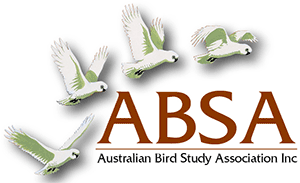Gang-gang Cockatoo breeding in relation to altitude, latitude and long-term and concurrent temperature and rainfall, across parts of the ACT, NSW and Victoria
| Posted: |
14/10/2025 |
| Author(s): |
Belinda Morris, Ben Ward, Brad James, Chris Davey, Chris Munson, Giovanna Hounsell, Isobel Booksmythe, Joanne Scobie, Kate Finley, Katie O’Connor, Larissa Dann, Louise Docker, Marguerite Burk, Mathew Misdale, Michael Mulvaney, Peter Ottesen, Phoebe Reeve, Richard Kuhlen, Sue Tolley, Susan Rhind, Tom Tyrrell |
Rising temperatures are a factor linked to Gang-gang decline. A large citizen science effort over three years recorded the number of fledglings raised and the timing of fledging for 85 nesting events from 11 regions across southeast Australia. The timing of fledging was related to altitude, but not latitude, at the nest site location, with earlier fledging at lower altitudes. We tested whether the timing of fledging was associated with measures of rainfall and temperature over the last 50 years. Of these, we only found a correlation between earlier fledging and a measure of high breeding season rainfall. The number of chicks fledged from successful nests was not significantly related to altitude or latitude. However, the number of chicks fledged was significantly higher, on average, from nests at long-term warmer and wetter sites, but lower from nests with higher maximum temperatures during the concurrent breeding seasons. Predicted increases in the regularity and earlier timing of extreme daily temperatures under climate change may cause greater loss of chicks from heat exhaustion. This risk is exacerbated by the predicted increases in intense rainfall events as this may lead to more frequent drowning of young in hollows. Gang-gangs may have some resilience to these increasing risks of climate change. At lower altitudes, early fledging enables Gang-gang nestlings to largely avoid the hotter and stormier days of mid and late summer. Conversely, later fledging at high altitudes means chicks are more likely to avoid cold snaps and frosts in late spring, but are then more exposed to unfavourable late summer climate. Gang-gang nest hollow selection of well insulated hollows in hot seasons and good draining hollows in wet seasons may provide additional resilience.
>> Download Abstract |
File Size: 250 KB
MEMBERSONLY
